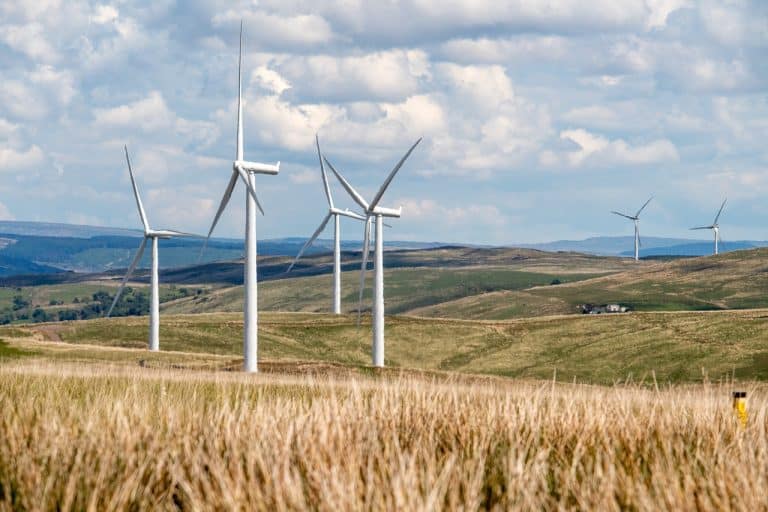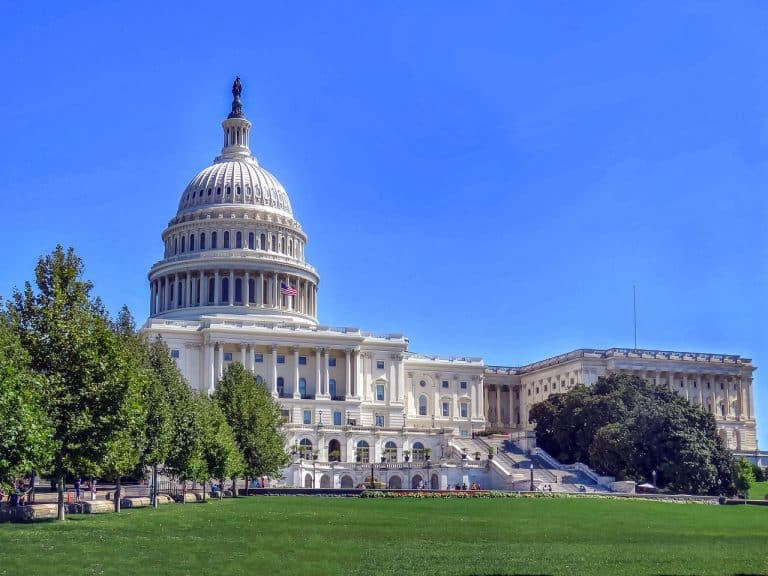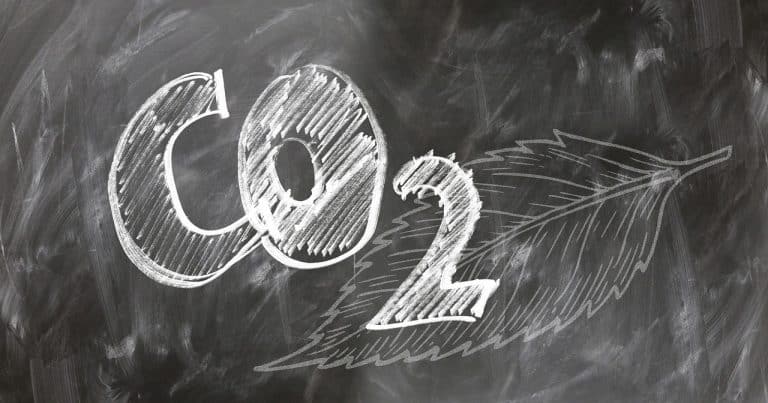A few decades into the growth of the carbon market, and most carbon offsets are still nature-based.
Yes, there’s growing interest in removal techniques like CCS (carbon capture and storage) and DAC (direct air capture). But for the foreseeable future, the world of carbon offsets will continue to be dominated by nature-based solutions.
And until very recently, nature-based offsets have meant primarily one thing: trees.
Forestry-based credits – the original carbon offsets
Forest-based credits have been around for decades in one form or another. They began, formally, under the Kyoto Protocol.
The Kyoto framework turned out to be not entirely kind to forestry-based credits themselves, but the idea of using forests to combat greenhouse gas emissions quickly took root.
As with most nature-based carbon credits, forestry credits take two primary forms:
- Preventing Deforestation
- Afforestation/Reforestation
Prevent a chunk of the Amazon rainforest from being cut down, and you’ve saved all the carbon dioxide currently trapped in the trunks of those trees.
That’s basic prevention; but in cases where forests existed historically, credits take the form of reforestation. If you’re planting trees where there never really was a forest, that’s afforestation – planting a whole new potential carbon sink.
It’s partly that last idea – afforestation – that has led to increasing scrutiny of the entire idea of forest-based credits.
For years, the logic went something like this:
One tree can absorb anywhere from 400 pounds to 1 ton of atmospheric carbon emissions over the course of its life. Most of that absorption occurs after about 40 years, once the tree reaches maturity.
Extrapolate that out a bit, and you’ve got the potential for hundreds of tonnes of CO2 emissions trapped in every hectare of mature forest. And as an added bonus, the CO2 sequestered in the trunks of the trees remains there in the form of lumber, only gradually being released as trunks and boards decay.
Given those numbers, an obvious way to fight climate change was to plant empty land to forests. Even other kinds of natural environments – including grasslands – didn’t have the potential biomass and CO2 absorption of forests.
But these days, scientists and market analysts alike are starting to take a closer look at the numbers. After all, trees don’t grow everywhere; does that mean that the only way to fight climate change is to plant every bit of public and private land to trees?
Missing the (climate) forest for the trees
If the only weapon in the offsets arsenal is forests, then we’re in trouble. It would require planting 40 billion trees per year to offset human-caused CO2 emissions at current rates.
That many trees would quickly exhaust available land, and the full effect of those carbon sinks wouldn’t be seen for the better part of four decades.
In addition, a few decades of large-scale tree planting efforts have demonstrated a number of potential drawbacks with forest-based credits.
Monoculture and improper forest choice
Forests are good, but not all forests are equally good everywhere. Carbon projects that rely on rapid afforestation efforts can fall into the trap of prioritizing tree monocultures – one type of tree, typically rapid-growing, planted in vast plantations.
Planting the wrong kind of tree can further complicate matters, resulting in forests with depleted biodiversity or ones that are poorly suited to a particular climate.
Potential for rapid degradation
Those factors, in turn, add to the risk of rapid degradation. Forests established as carbon sinks can quickly see all their gains reversed due to disease or wildfires, risks that are increased when compounded by monoculture forestry practices.
One ill-timed forest fire can see all the greenhouse gas reductions of a forestry-based offset literally go up in smoke.
Displacement
The human factor comes into play as well; to plant new forests, you need land that is currently un-forested. But not all un-forested land is just sitting vacant and empty.
It may be used for agriculture, pastorage, living space, or some mix of all three. Aggressive forestation projects can sometimes lead to the displacement of current populations and the loss of native grasslands.
Criticisms of the over-reliance on forest-based offsets are nothing new. Some of those criticisms have been answered by better and more rigorous offsetting frameworks, from REDD+ to the recent Glasgow Agreement.
But others have begun to look beyond forest-based credits at other widespread ecosystems, and wonder if the old calculations on biomass and potential carbon storage still hold true.
Expanding nature-based offsets: grassland and forestry-based carbon sinks
Current estimates indicate that at the conclusion of the last ice age, the earth’s surface was a little over half forests. That percentage has steadily declined, and the percentage of other common ecosystems has more-or-less increased.
Grasslands, in particular, have always been a major landform. When combined with shrubland and marginal lands, they cover the vast majority of the non-forested surface of the earth.
At first glance, grasslands may not seem like an ideal carbon sink. Trees make sense – tall, towering behemoths with immense amounts of C02 locked away in their trunks. Even the tallest grasses can’t come close, making grassland-based offsets something of an odd choice.
But in recent years, two major factors have begun to transform how offset programs on the voluntary carbon market (VCM) view grasslands.
The secret source of grassland biomass
First, the biomass question. Yes, trees are the more obvious warehouses for CO2, locked away in their towering trunks. Grasses, on the other hand, tend to be short, often without wooden stems that would appear to be a natural repository for CO2.
A closer look at grasslands reveals that there’s far more going on beneath the surface. Grasses, unlike trees, keep the vast majority of their collective biomass underground in extensive root systems. Add in the tendency for grass to grow in dense concentrations, and the apparent difference in available biomass starts to diminish.
The fact that grasslands lock most of the CO2 they absorb away in underground root systems, rather than visible trunks, gives grassland-based offsets one more key advantage over forest-based offsets; resiliency.
Grasslands: a more resilient offset
Perversely, ongoing climate change increases the demand for forestry-based offsets in both the voluntary and regulatory markets, while also increasing the pressures on those very forests.
Warming forests are more susceptible to disease and insect infestation, degrading the quality of existing forests. And the warming climate, among other factors, has led to the recent significant rise of forest fires.
Fires carry a double punch; by destroying entire forests, they not only remove a carbon sink for future emissions, but they also release tonnes of carbon into the air at once.
Grassland projects, on the other hand, can largely avoid the fire problem. When a grassland burns, the root systems are left largely intact. Grass regrows quickly in most cases, meaning that a burned-off field recovers in a matter of weeks or months, rather than the years and decades it can take a mature forest to re-grow.
Forests may get most of the press, but grasslands are proving to be resilient carbon sinks. A California study examined four scenarios in a warming climate that compared forest resilience to grasslands; in three of the four, grasslands proved to be more resilient in the face of ongoing climate change.
Origins of grassland-based carbon offsets: from protection to restoration
The progression of grassland-based carbon credits on the voluntary markets has followed the same path as forestry-based ones. The first grassland offsets focused on protection and preservation.
A carbon sink saved is one that doesn’t have to be created again in the future. With grasslands, the primary threat is agriculture.
Agriculture isn’t as bad as paving a field over to make a parking lot, but in terms of CO2 emissions, tilling for crops disturbs the root systems that trap carbon underground. The loss of soil carbon is compounded by the use of carbon-emitting machinery burning fossil fuels.
To preserve grasslands as-is, offset projects tend to focus first on preventing the conversion of grasslands to tilled fields. Projects take existing grasslands – typically well-established ones – that are under some threat of being converted to a different use, and award credits for landowners who keep them in their current state.
As a second step, grassland carbon credits might be rewarded for agricultural techniques, such as no-till farming, that preserve underground biomass. These techniques are nothing new, although the technology required to accurately monitor underground carbon sequestration is still under development.
The final stage in the development of grassland-based offsets seeks to expand and restore historic grasslands. Typically, this involves converting existing cropland to grassland, or (in some cases) to pastorage or crops such as hay that require less direct planting and tilling.
Advantages of grassland offsets
It’s that last idea – integrating carbon sequestration potential with existing human use – that makes grassland-based offsets so appealing. Forestry-based offsets are often used the same way, with monoculture tree plantations functioning as carbon sinks and then harvested en masse.
Grasslands offer the same cycles of growth and harvest, but with the added benefit that cutting hay in a field does little to disturb the carbon locked away in the soil.
Grassland-based offsets offer the potential to work alongside current human usage in a way most forestry-based offsets cannot. This has given grassland sequestration initiatives key advantages over forestry counterparts.
There’s no need to lock up a chunk of land in a Sitka pine forest for 30 years; instead, farmers and ranchers have the chance to continue using land for pastorage or no-till farming while also selling offset credits on the VCM.
In short, these credits aren’t necessarily primarily focused on virgin prairie grassland preservation, though some of those efforts might be included. More often, grassland protocols include provisions for livestock grazing or hay-cutting, attempting to create reliable carbon sinks without completely transforming current land use.
This gives most grassland sequestration efforts a community appeal that may not be possible with forestry-based efforts. Well-designed grassland programs openly acknowledge that the co-benefits of such projects include maintaining the key aspects of current communities, such as ranching and farming, rather than asking them to uproot or change lifestyles entirely.
Adjusting rangeland practices to encourage soil health and improve rates of carbon sequestration, while also providing financial incentives, turns out to be an easier pill for many rural communities to swallow.
It’s no coincidence that many of the key drivers behind grassland-based offsets are rural ranching and farming communities, as well as the government agencies tasked with supporting them.
Pilot projects have included partnerships between organizations as varied as Ducks Unlimited and the Climate Action Reserve. One such early program, initiated in 2011, was conducted under the auspices of the USDA. In Canada, key programs have been set up by the Canadian government’s own Agriculture and Agri-food Canada department.
That level of direct community and government involvement is harder to achieve with forestry-based credits, where tensions between forest preservation and agricultural lifestyles are more direct and harder to resolve.
Benefits of grassland offsets
On the broader VCM, grassland-based offsets provide a number of benefits, including:
Adaptability – Grasslands are variegated, including everything from dense prairies to pastoral cropland, and occur across a variety of climates.
Resilience – Most grasslands have proven to be less susceptible to extreme weather, including prolonged drought and wildfires, which have at times devastated forestry-based credits.
Integration – Many grassland offset projects can be integrated with current farming techniques, including no-till farming and livestock grazing.
Expanding the role of nature-based offsets
Grassland sequestration projects form part of a growing world of nature-based offsets. The image of a pristine forest as the best – or even the only – kind of nature-based offset is rapidly changing.
Forests will continue to play a vital role in the VCM, but nature-based offsets are beginning to grow beyond forestry alone. In addition to grasslands, there’s renewed interest in the peat bogs found around the globe and more traditional wetlands. Frequently, the search for new kinds of natural carbon sinks is spurred on by weaknesses in a forestry-first approach.
In the meantime, grassland conservation provides a uniquely applicable real-world carbon sink, one that many ranchers and farmers in North America and beyond can adapt to comparatively quickly. And the timescale for many of these projects is much faster – years to restore vibrant grasslands, compared to the decades necessary to regrow a forest.
Grassland-based offsets form part of an emerging frontier for carbon sequestration, blending positive climate activism with real-world adaptability. Call it a realpolitik for the VCM, with grasslands at the heart of it all.










